Food Sensitivity Testing:
What You Need To Know My journey to health has been a long one (and will continue) and food has played an enormous role in my improvements. What some of you may already know from reading my story, is that I have been gluten free since 2007 after I was diagnosed with Hashimoto’s following two babies, under a year apart. I had researched links between gluten sensitivity (inflammation) and Hashimoto’s and also saw an integrative practitioner that recommended I give it up. And so I did. I remained somewhat stable for a few years eating this way until after the birth of my 3rd baby, 3 years later. I crashed hard around 4 months post-partum and had an extremely difficult time rebounding.
There were additional stressors around that time (milk dried up, cross country move, 3 young children, etc) but I became gravely ill and continued to decline. I went to every specialist in the Washington DC area looking for answers; I treated Lyme and co-infections for over a year hoping it would help. It didn’t. And yes, I tried it all. Around this time I started researching Paleo and how it can be a healing lifestyle. I became really fascinated by real food and its ability to heal (or harm).
I also quickly realized that my “gluten free diet” wasn’t really doing me any favors, as I was avoiding only one inflammatory food and failed to include many others that could help. I dug my heels into Paleo and around the same time tested for food sensitivities as well, something I had not really pursued aggressively in the past. I also came across a variety of methods to test for food sensitivities, which I believe were 100% instrumental in helping navigate my way back to health.
Here I will show you just 4 opportunities to test for food sensitivities, how to go about those, and what your results might look like. Keep in mind there are many other methods and labs available. These are just 4 in my personal experience. Option 1: First, I was tested through Genova Diagnostics. Genova is a highly respected and trusted lab which one of my integrative MD’s uses. They have a wide array of tests (many of which I’ve taken), and their results format is easy to comprehend, even as a patient. What you need to know about their food sensitivity test:
- It’s based on IgG results (antibodies)
- Taken by blood, and sent off by mail
- Can only be obtained through a healthcare provider who has an account with Genova
- It looks at around 80 common foods and measures the reaction from “none detected” up to “high”
- If you are interested in Genova testing you can look for a practitioner HERE
- Cost can be expensive if out of pocket but sometimes can be covered by insurance. Please be sure to check the codes with your insurance company to see if you qualify
- Below you can see my results from 2013 and 2014
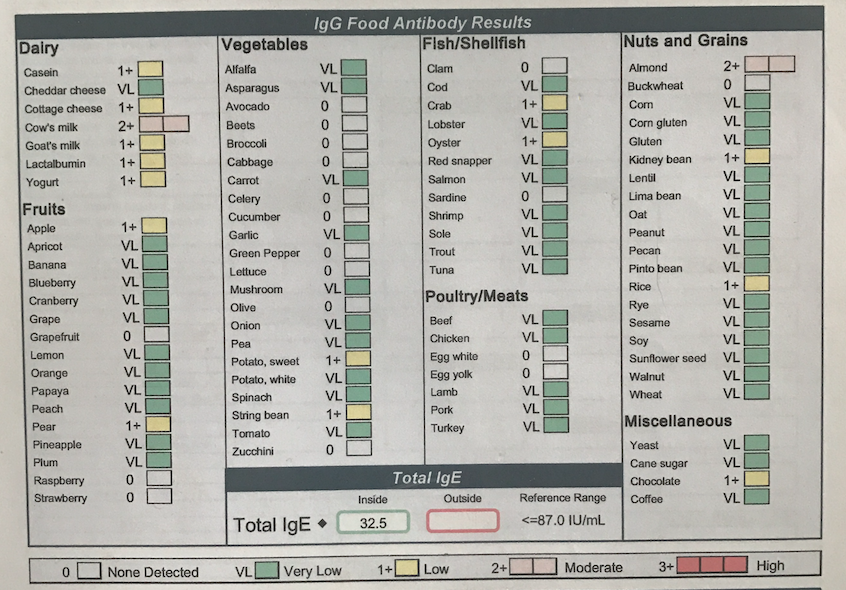
2013
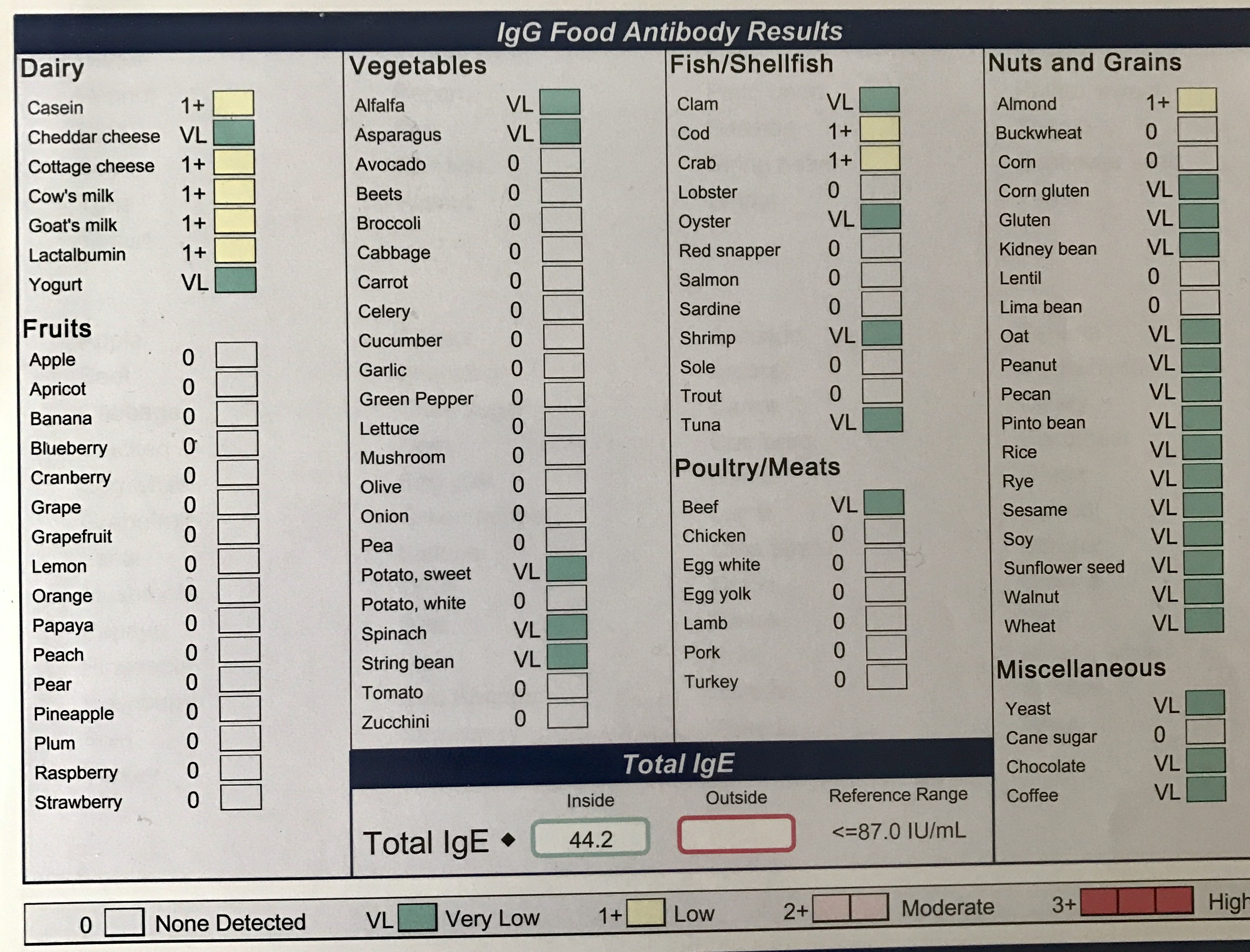
2014
Option 2: Second, I was tested via muscle testing. Muscle testing, or applied kinesiology, is a somewhat less common practice than blood tests (or skin tests as in traditional allergy testing). In my experience, it is important that the practitioner who uses muscle testing be one who has sufficient experience and know-how. Not all integrative practitioners are created equally, just like not all mainstream MD’s are. Muscle testing has often been accused of being insufficient or quackery. You can read some more HERE about why this method might actually be just as effective as blood testing if done correctly. What you need to know about muscle testing for food sensitivities:
- No needles are used, this does not test blood or urine for antibodies
- In my personal experience, my blood tests for food sensitivities and my muscle testing proved to be aligned (these were performed by 2 different practitioners who did not see either result before or after)
- Homeopathically charged vials of the potential allergen/sensitivity are placed on or near the person being tested. The practitioner then presses on a muscle asking you to create resistance. Here is a VIDEO of what this looks like
- Cost can vary based on the practitioner, you can easily spend $100-200 per visit depending on where you are in the country and how popular your practitioner is
- You can find an applied kinesiology practitioner HERE (many are chiropractors and other more holistic healthcare providers).
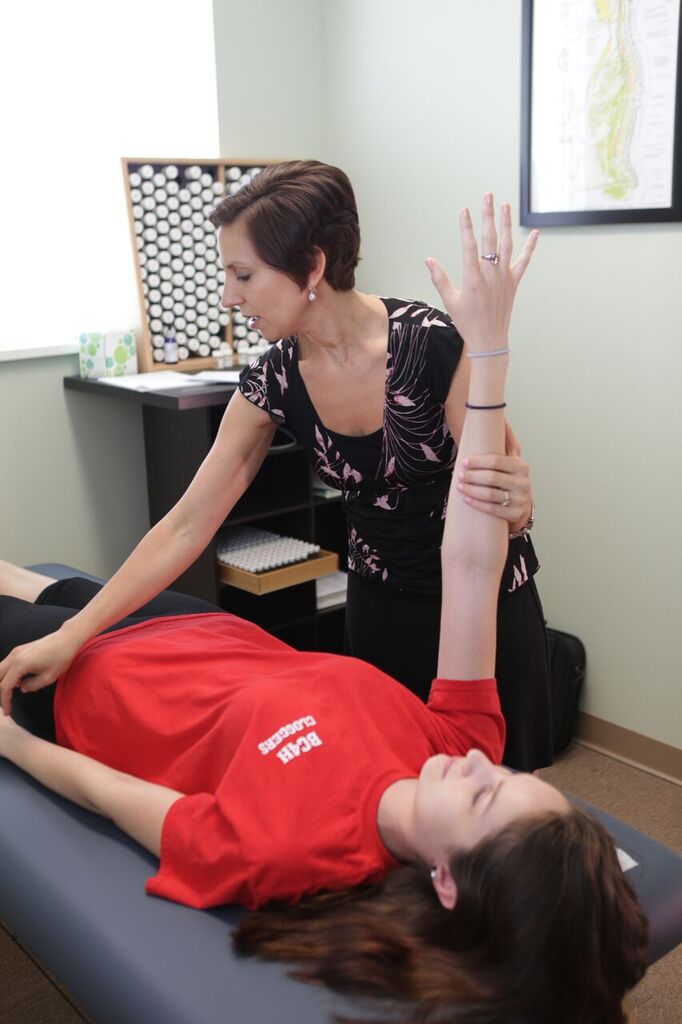 The photo above is from my friend Sarah Outlaw testing in her practice. You can read more from her on Nutrition Response Testing HERE! Option 3: Elimination/Rotation diet. This method of testing requires the most work from the patient but can definitely be the most telling. Basically you would eliminate a lot of common food triggers and slowly add them back after giving your body time away from them. For example, you might give up tomatoes, potatoes, eggplants and other nightshades for a month and then slowly reintroduce. Did joint pain or rashes flare? These might be a problematic food group if so. What you need to know about elimination diets:
The photo above is from my friend Sarah Outlaw testing in her practice. You can read more from her on Nutrition Response Testing HERE! Option 3: Elimination/Rotation diet. This method of testing requires the most work from the patient but can definitely be the most telling. Basically you would eliminate a lot of common food triggers and slowly add them back after giving your body time away from them. For example, you might give up tomatoes, potatoes, eggplants and other nightshades for a month and then slowly reintroduce. Did joint pain or rashes flare? These might be a problematic food group if so. What you need to know about elimination diets:
- They can be time consuming, taking a month to reintroduce each potential trigger food after eliminating it
- They place more work on the patient, meaning it is not a 5 minute test in a doctor’s office
- They may be the most accurate, given that no other major stressors are introduced during the time of elimination
- They might pick up on foods that other tests miss
- HERE is an example of an elimination diet
- Keep in mind you may need to watch other supplements you are taking at the time as well for most accurate results
- Cost is relatively low which is a convenience if you are unable to pay out of pocket
 Option 4: This 4th option I just recently tried last week and I am sold. I tried a newer company called EverlyWell which ships directly to your home. I have seen home testing become more popular in recent years, especially with the difficulty in finding mainstream doctors who are willing to test patients’ requests. I did not have any expectations but was indeed curious. So I ordered online, the kit showed up. I pricked my finger with a lancet they included, sent my sample back and in less than a week had my results. If you compare these results to my Genova results, you’ll see that over time, my food sensitivities have improved, indicating that my gut definitely continues to heal since 2013. Interestingly, however, dairy remains a major culprit, and almonds always come back at least slightly elevated. Regarding the test itself, the instructions were easy to follow and I love that they have other testing opportunities including thyroid, fertility, sleep and stress, and more. You can read more and order tests HERE (you can save 15% with code paleo15! )What you need to know:
Option 4: This 4th option I just recently tried last week and I am sold. I tried a newer company called EverlyWell which ships directly to your home. I have seen home testing become more popular in recent years, especially with the difficulty in finding mainstream doctors who are willing to test patients’ requests. I did not have any expectations but was indeed curious. So I ordered online, the kit showed up. I pricked my finger with a lancet they included, sent my sample back and in less than a week had my results. If you compare these results to my Genova results, you’ll see that over time, my food sensitivities have improved, indicating that my gut definitely continues to heal since 2013. Interestingly, however, dairy remains a major culprit, and almonds always come back at least slightly elevated. Regarding the test itself, the instructions were easy to follow and I love that they have other testing opportunities including thyroid, fertility, sleep and stress, and more. You can read more and order tests HERE (you can save 15% with code paleo15! )What you need to know:
- You do not need a doctor’s approval or traditional lab order
- You’ll be testing on your own at home and receive the results via email (you’ll log in online to retrieve them)
- You’ll pay out of pocket (you can file with your insurance company after the fact if you desire)
- 3 drops of blood are needed for testing; you’ll prick your finger with a lancet and drop the blood onto a small card they provide before mailing it back
- The results are not shared with anyone but you – you may then choose to share them with your practitioner but they will not be forwarded automatically
- This is IgG antibody testing like the Genova test mentioned above
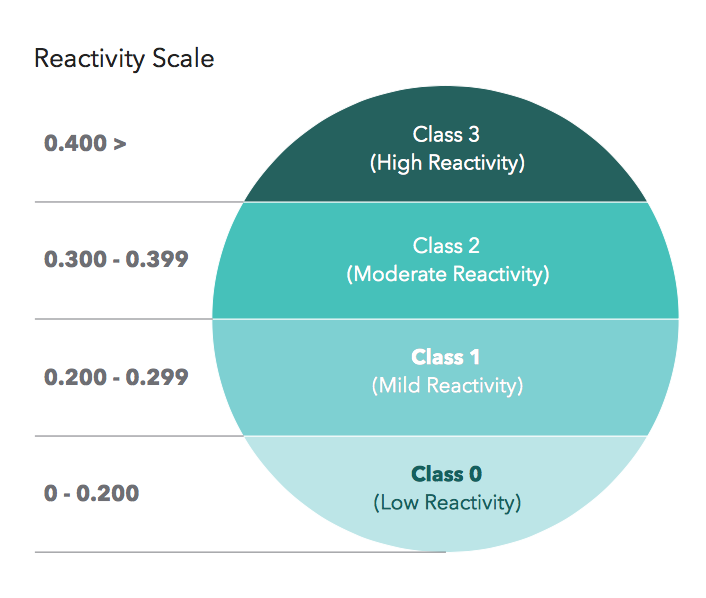

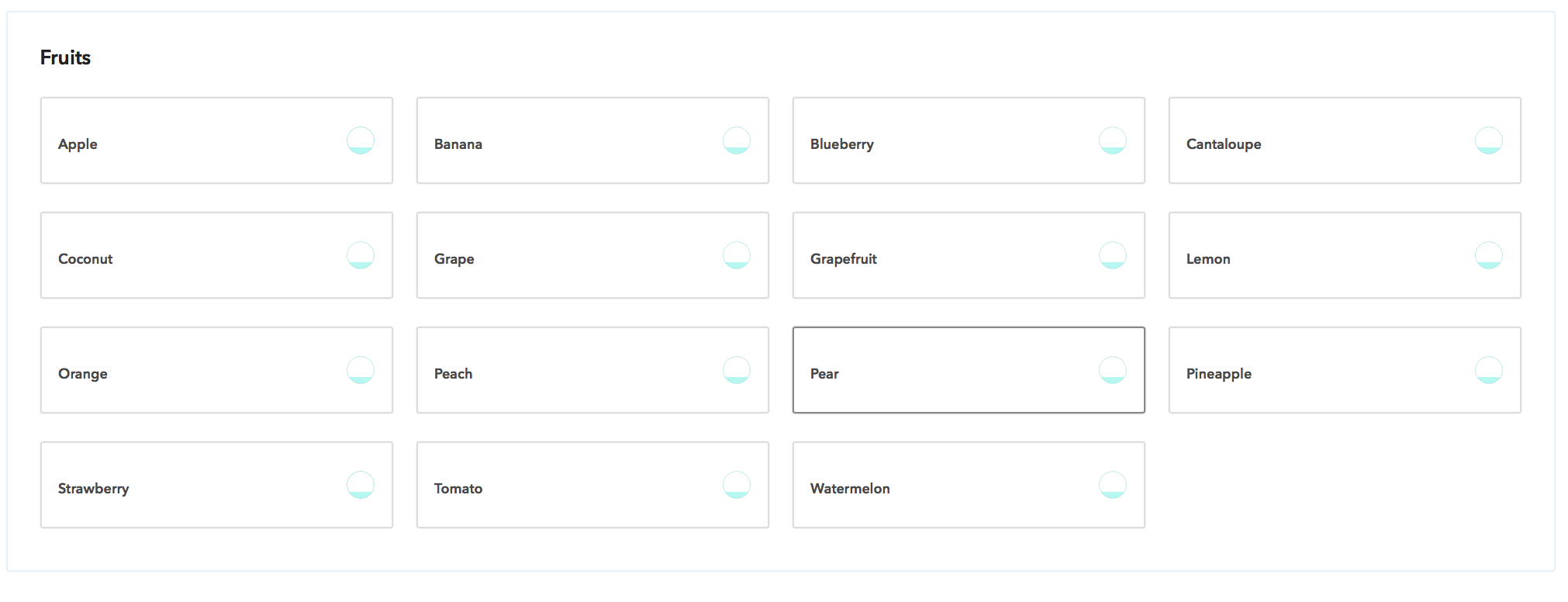




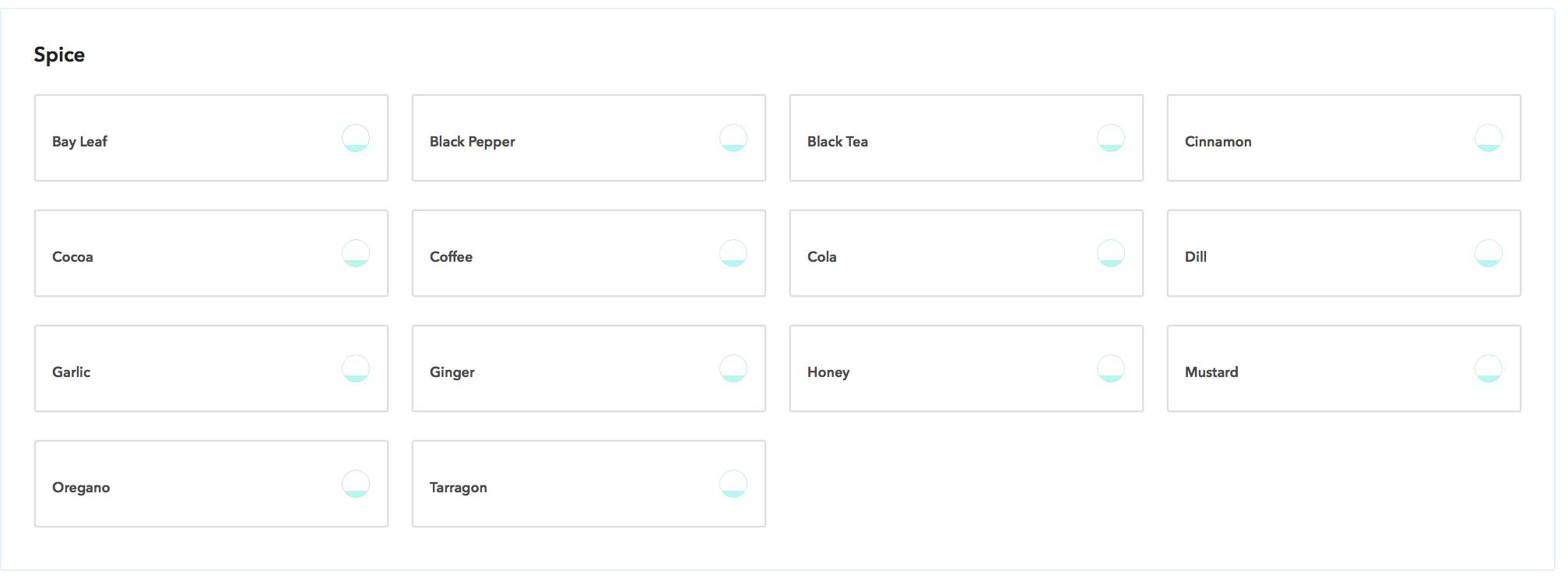
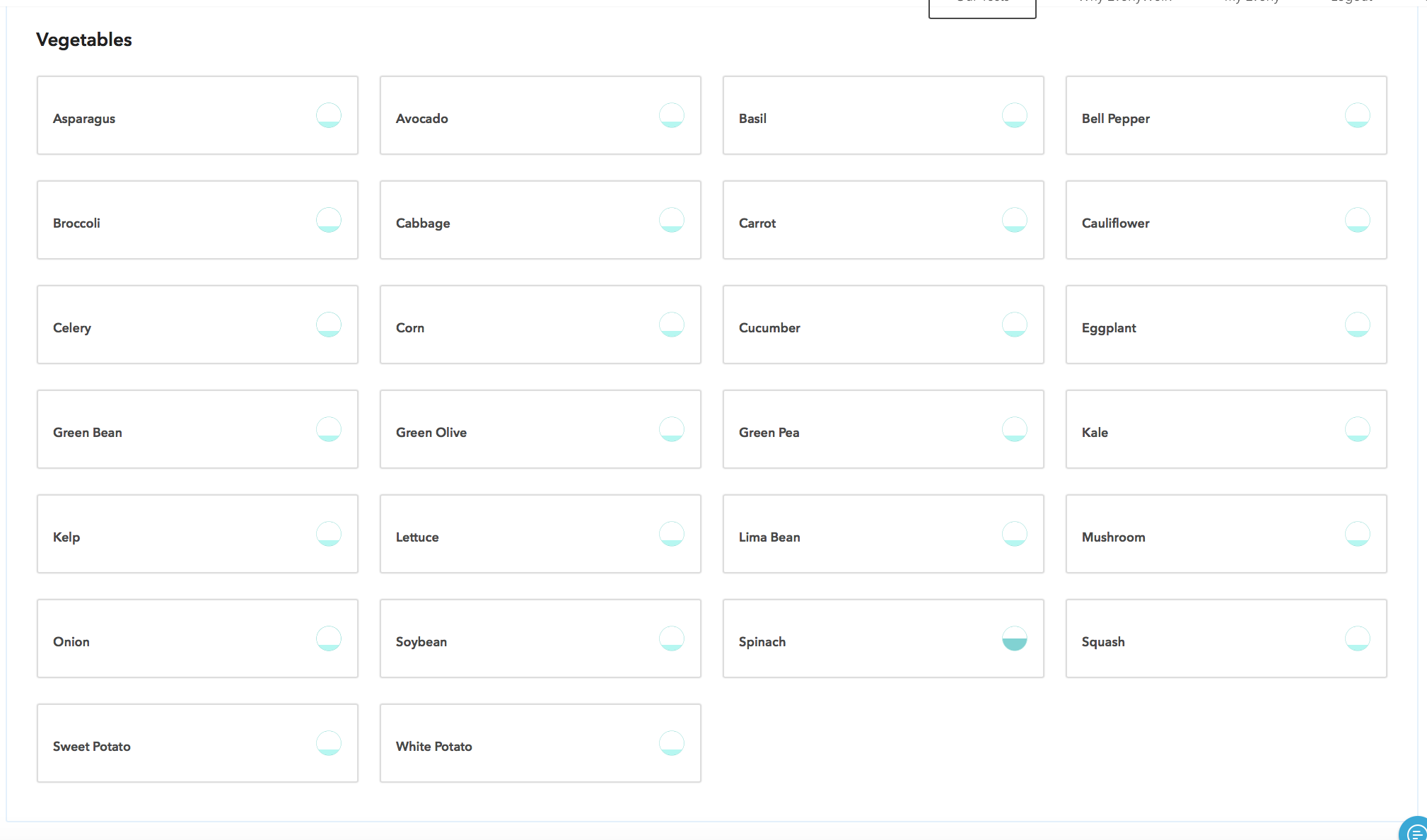

Thank you for sharing! I just had the IgG blood test done and it was very interesting. I found foods that I didn’t know I was sensitive to and foods that I feel sensitive to do not show up. I’m always curious about methods of testing and how I can help myself from autoimmune. I’m finally seeing a functional medicine doctor. He has a version on an elimination diet that doesn’t complete eliminate offending foods. It’s an interesting journey and loving the healing.
So interesting!
Your health journey sounds so much like mine!! I have Hashimotos and always flared after each pregnancy around month 4!! Then my health crashed after a very stressful time, 5 years, and haven’t been the same since. I now know I have Lyme and co-infections. I’ve been to so many LLMDs but not really getting anywhere. I want to take things into my own hands but it’s so overwhelming figuring it out on your own.
Regarding the 4th option you mention, testing from home: I wonder if filing after the fact with your insurance company results in coverage or if you’d somehow need to show proof of need or something?
I am going to try and see what happens!
You are in the DC area?! South, North, East, or West? I’m in Woodbridge, VA. I’m curious about the allergy testing. I’ve wanted to get tested but worried about the expense. I’ve adopted a mostly paleo diet as it seems to work better for my energy levels but I still have quite a bit of bloating and tummy issues. Things have really changed for me since I’ve had kids. it’s amazing how they can change our bodies and our tastes.
Hi Allison! I am in Arlington! I love the allergy testing I’ve had done, I really feel like it gives me a good picture of what’s going on!
Hi Allison! I’m in Woodbridge, too! Nice to know there are other Paleo people around.. I’m pretty sure all my friends and neighbors think i’m crazy when it comes to how I eat! I used to have a lot of tummy issues, even while doing a whole30 and eliminating everything but whole natural foods. I found my problem to be fructose. Even the fructose found in fruits and vegetables was too much for me. I adoped a low FODMAP version of the paleo diet, and that WORKED WONDERS!! Even things like brussels sprouts, garlic, onions, mango, grapes, sugar snap peas, and cashews were causing problems for me. I can still eat very small quantities of those foods, but I usually avoid them and that has helped tremendously.
Hi Jennifer,
Love your blog and have bought your cookbooks and legit bread. My question is which of these 4 options would you start with. I try to eat mostly Paleo but lately I have noticed at times I feel really bloated and sluggish and wondering if there is something else I need to do or eliminate. Thanks so much.
It depends on your insurance coverage. I love the at home testing because it’s SO EASY and it’s not over the top expensive. But if you have an integrative doc that will test for you and it is covered by insurance you could always go that route too!
I want to add another food sensitivity test called KBMO. Its marketing says it’s the most sensitive IGg test on the market and it tests for 138 food and additives. My naturopath has used it for years. I found this blog because I have just learned eggs and dairy need to be eliminated. I have been on a long journey since 2004 because of Lyme and Celiac and I’m so grateful for all of the support, including your blog!